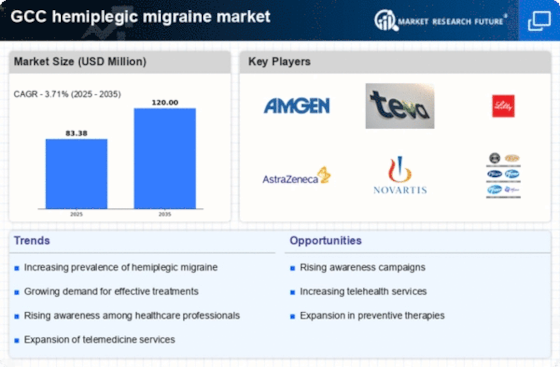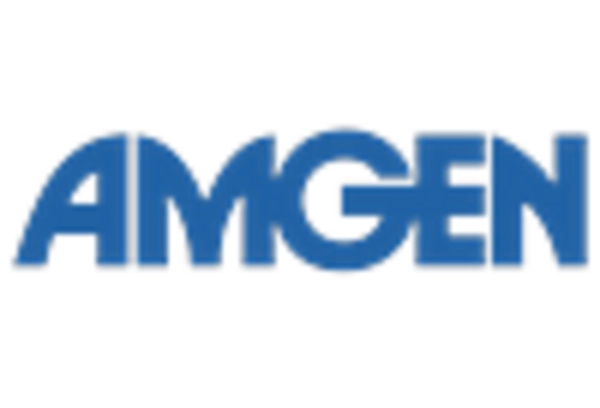Growing Research Funding
Increased funding for research initiatives focused on hemiplegic migraine is a critical driver for the market. Various governmental and private organizations in the GCC are allocating resources to study the underlying mechanisms and potential treatments for this condition. This influx of funding is likely to accelerate the pace of clinical trials and the development of innovative therapies. As new treatment options emerge, they may provide patients with more effective solutions, thereby expanding the market. The hemiplegic migraine market stands to benefit from these advancements, as they could lead to improved patient outcomes and increased awareness among healthcare providers.
Enhanced Healthcare Infrastructure
The development of advanced healthcare infrastructure in the GCC is significantly impacting the hemiplegic migraine market. Governments in the region are investing heavily in healthcare facilities, aiming to improve patient access to specialized care. This investment is likely to enhance the diagnosis and treatment of hemiplegic migraine, as more healthcare professionals become trained in recognizing and managing this condition. Additionally, the establishment of specialized clinics and treatment centers may facilitate better patient outcomes, thereby increasing the demand for therapies and medications. As a result, the hemiplegic migraine market is expected to experience growth driven by improved healthcare services and patient management strategies.
Rising Demand for Personalized Medicine
The trend towards personalized medicine is influencing the hemiplegic migraine market in the GCC. Patients are increasingly seeking tailored treatment plans that consider their unique genetic and environmental factors. This shift is prompting healthcare providers to adopt more individualized approaches to managing hemiplegic migraine, which may enhance treatment efficacy. As a result, pharmaceutical companies are likely to invest in the development of targeted therapies that cater to specific patient profiles. This focus on personalized medicine could drive growth in the hemiplegic migraine market, as patients are more likely to adhere to treatments that are customized to their needs.
Rising Incidence of Hemiplegic Migraine
The increasing prevalence of hemiplegic migraine in the GCC region is a notable driver for the hemiplegic migraine market. Recent studies indicate that the incidence of this rare type of migraine is on the rise, with estimates suggesting that it affects approximately 0.1% of the population. This growing incidence is likely to lead to heightened demand for effective treatment options and healthcare services. As awareness of hemiplegic migraine expands, healthcare providers are more frequently diagnosing this condition, which may contribute to an increase in market size. Furthermore, the rising number of patients seeking specialized care could stimulate investment in research and development, ultimately benefiting the hemiplegic migraine market.
Increased Collaboration Among Stakeholders
Collaboration among various stakeholders, including healthcare providers, researchers, and pharmaceutical companies, is emerging as a key driver for the hemiplegic migraine market. Such partnerships are fostering innovation and facilitating the sharing of knowledge and resources. By working together, these entities can enhance the understanding of hemiplegic migraine and develop more effective treatment options. Additionally, collaborative efforts may lead to the establishment of clinical guidelines and best practices, which could improve patient care. The hemiplegic migraine market is likely to benefit from these synergies, as they may result in accelerated advancements in treatment and increased patient access to care.

















Leave a Comment